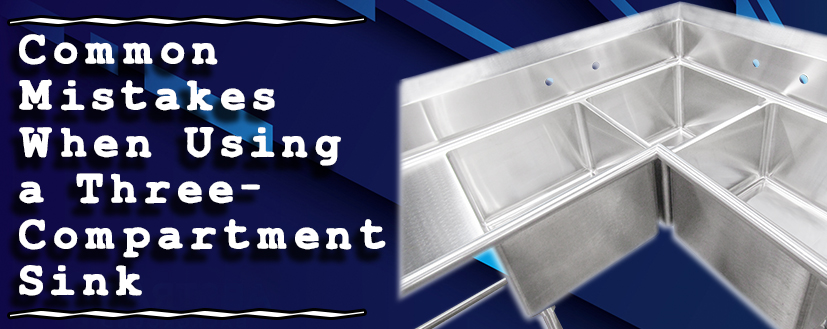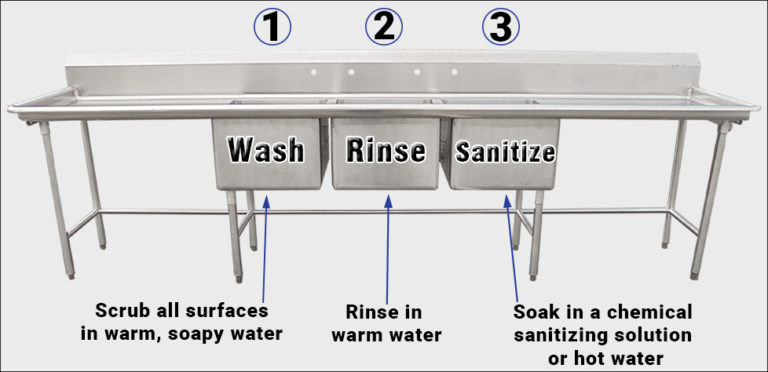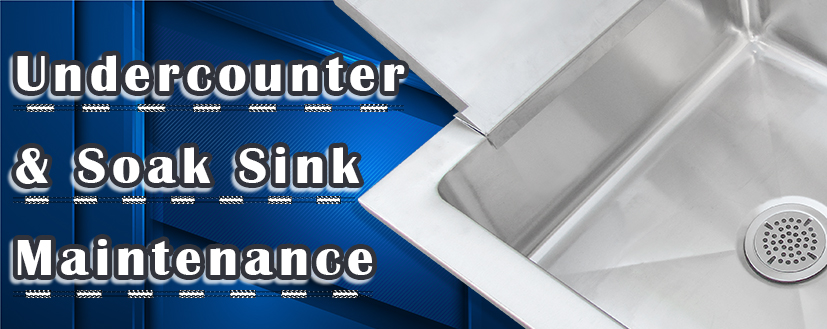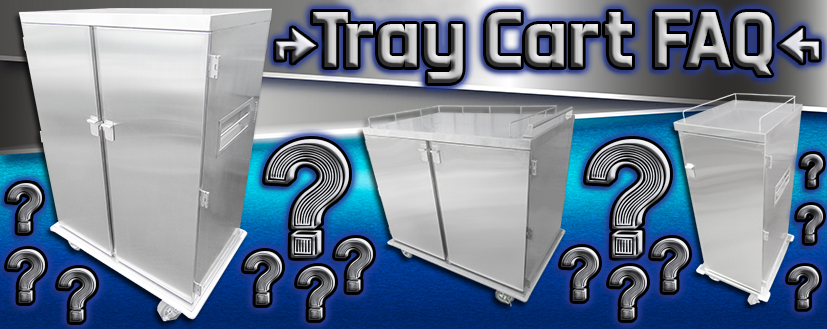Common Mistakes When Using a Three-Compartment Sink

Three-compartment sinks are a staple in virtually all commercial kitchens in the United States. They are at the forefront of warewashing & even mandated by some local regulations. Manual warewashing would be impossible without them. However, they differ from other common equipment & that is where some rules come into play. Are you using your three-compartment sink the right way?
In this article, we'll go over five mistakes when using a three-compartment sink. We’ll also go over solutions to these as well. Let's jump right into the #1 mistake.
Mistake 1: Misusing the Sequence!
To understand this one, let’s break down the right sequence when using a three-compartment sink:

The first compartment is used to scrub all surfaces of the wares in warm, soapy water. Sanitizing will not destroy bacteria & viruses if excess grime is in the way.
In the second compartment, the previously cleaned items are rinsed in warm water. Soap residue can prevent sanitizer from killing germs.
In the third compartment, your wares are soaked in a chemical sanitizing solution or hot water. The items are completely submerged for a set time (more on this later).
Failure to adhere to the above order WILL lead to cross-contamination & improper cleaning. Be mindful of the right sequence & you should be a warewashing guru in no time.
Mistake 2: Mixing Tasks
As noted above, compartment sinks in general are meant for warewashing (mainly dishware & utensils). They should not be used for the following:
- Handwashing
- Storage (utensils, dishcloths, ingredients, etc.)
- Food Prep (thawing)
- Dumping Dirty Water (such as from a mop)
Mixing these actions will result in, once again, contamination & improper cleaning. The above tasks are fulfilled using other equipment such as hand sinks & mop sinks. Compartment sinks are their own entity entirely.
Mistake 3: Failing to Pre-Scrape
A compartment sink has a drain just like any other sink, so clogging should be avoided at all costs.
The main way of doing this is to scrape any large debris off your wares before it even hits the Wash compartment. One way of doing this is to utilize a pre-rinse faucet & a scrap tray so all the particles are captured & eliminated. Failing to get rid of the large scraps will also result in contaminating your wash water found in the Wash compartment.
Mistake 4: Sanitization Concentration & Time
The sanitizer concentration & time should be monitored closely when using a three-compartment sink.
Wares must be fully submerged in the Sanitize compartment for a certain period. Furthermore, using the proper amount of sanitizer ensures that you will kill all the bacteria found on your wares. After a while, the sanitizer is sure to become dirty, so switching it out often will alleviate this.
Mistake 5: Using Cloths to Dry
Air drying is the most effective way of drying off your wares once the sanitization process is complete. Using towels or rags will only increase your chances of contaminating them again, especially if you keep reusing the same cloths. Having a separate area, like a drainboard, to store sanitized wares is an effective way of achieving this.
Compartment sinks are an integral part of facility hygiene & play a significant role in safety. Also, having the proper compartment sink setup will avoid any regulation headaches. Finally, we HIGHLY recommend that all compartment sinks be NSF approved. This ensures that your sinks meet sanitary & safety protocols. Check out IMC’s latest NSF listings here. To learn more about IMC’s compartment sinks, click here.





